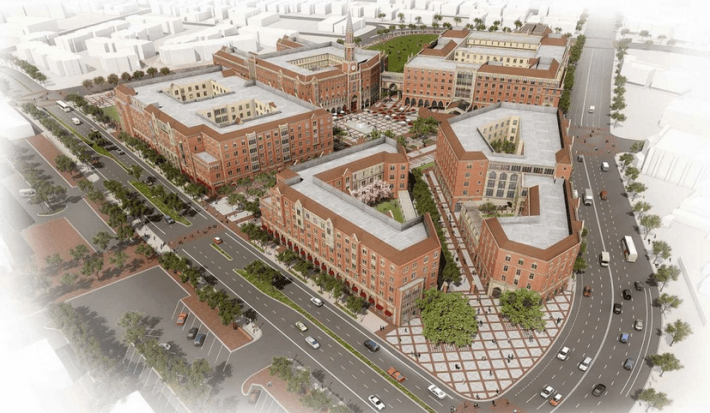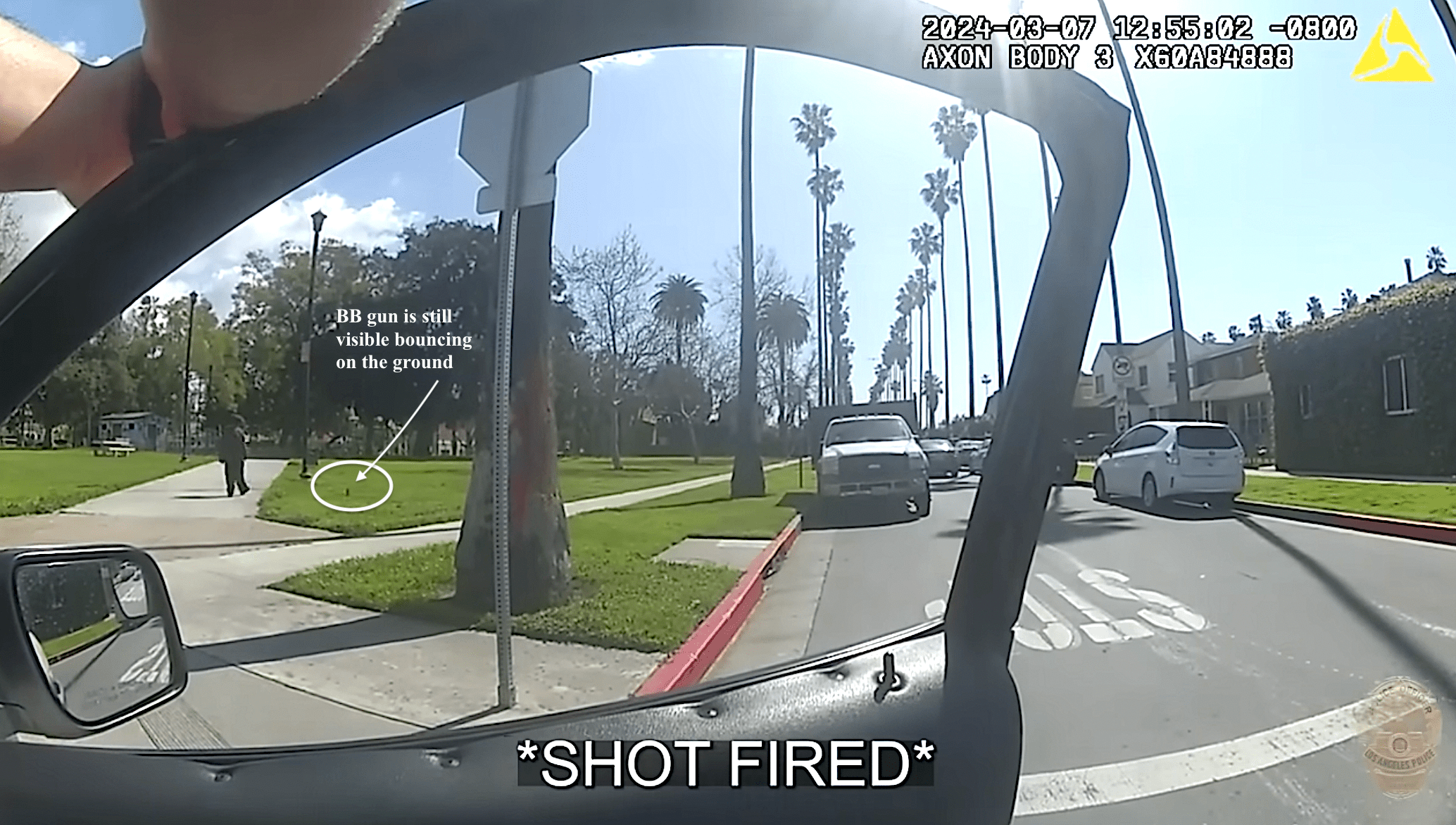Today in Two Steps Backwards: USC Discontinues Rideshare Subsidy Program for 3000+ Employees; Offers Parking Passes as Consolation
2:46 PM PDT on July 10, 2015

The letter sent to the more than three thousand faculty and staff that participated in USC's Rideshare Subsidy Program this past June 16th started off happily enough.
The USC Rideshare program is growing and continuing to evolve! In 2015, we recorded our highest-ever Air Quality Management District (AQMD) survey result – an AVR (average vehicle ridership) of 1.92. This is a phenomenal result – nearly 2 people on average in every car that comes to our campuses – and represents USC’s seventh consecutive year-over-year improvement in this important metric.
Not bad, right? Carpooling is happening. It's improving every year. And, on top of that, more than three thousand of the faculty and staff (out of a total of ~17,000) are choosing some form of transit or rideshare to get to campus. Despite the Reason Foundation's dire predictions about the Expo Line, people are taking advantage of the three USC stops. Things are looking up. Good on you, USC!

So, the logical thing is to reward that and encourage more rideshare, right? Because building and maintaining parking lots is expensive. The university already owns and/or manages ~16,000 spaces and is currently in the process of building some surface lots and two more structures -- one at the main campus and one at Health Sciences in Boyle Heights -- containing a total of 2,000 spaces. Using the median construction cost of a single above-ground parking space in Los Angeles, calculated at $19,355, it looks like those 2,000 spaces alone will cost approximately $38.7 million to build. And that is without factoring in the opportunity cost of constructing more facilities for students on what is rather valuable real estate.
All of which makes the next part of the letter that much more confusing.
With more people than ever now using alternate commuting options, Transportation Services must continue to evolve as well; with that in mind, we will be making the following changes to the Rideshare program in FY16 (starting July 1):
The direct [rideshare] subsidy program is being incorporated into the free [parking] passes program, and will no longer be available in its current format. In turn, the three free parking passes/month program (value: $30) is being expanded to include registered participants in the Metro Monthly and Metro ATAP programs, joining members of the Metrolink and LADOT programs who already receive this benefit.
Yes. That says what you think it says: Rideshare was such an overwhelming success that we're going to discontinue it and give you three free parking passes per month instead.
And in perhaps what is one of the greater ironies of this change, the letter notes that those using free passes must park in the University Parking Center (UPX), located east of the 110 freeway, several blocks away, but that they can take advantage of the free shuttles USC runs every 15-20 minutes, 16 hours a day, to get people back and forth between the parking structure and the campus. The cost of running those shuttles and the campus cruisers (which people also sometimes use to get to their cars), I was told by David Donovan of USC Transportation, is one of the reasons the transit subsidy program was cut. One or the other had to go, and cutting one of those was preferable to cutting jobs.
That said, in the larger scheme of things, pinning down exactly why the transit subsidy was cut is not that simple.
In the FAQs posted to answer employees' concerns about the change, the department explains that, every year, "the university asks all departments to reassess each program every year and compares them to the strategic needs of the university." And that process tends to result in departments scrambling to manage the "reallocation of resources to ensure high priority goals [of the university] can be funded." Often, those cuts come to jobs. In the case of Transportation, it was the subsidy.
To be fair to the department of Transportation, I'm sure the choice wasn't easy. Three thousand or more participants in the program equals approximately $1.2 million ($30 per month in vouchers or passes for participants) that would have to be paid out each year. That's a hefty chunk of change, especially if the ridership continues to grow. A small drop in the bucket in a university with a multi-billion dollar budget, perhaps, or when compared to the cost of constructing just 2,000 parking spaces (noted above), but a lot for a single department.
The explanation Donovan gives on the staff assembly page for the raising of parking rates (also part of the changes that hit on July 1), lays the dilemma out a little more clearly:
In short, [the changes] were made to help ensure that USC Transportation is able to generate enough revenue to cover the cost of the services it provides to the university community, and to allow the university to keep funds available for future investment in strategic initiatives, including retaining and hiring staff and faculty.
So, it really wasn't about transportation as much as it was about USC prioritizing the student environment and raising its national and international profile with rock star faculty and research initiatives.
Which could kind of be understandable except that the university is currently undergoing a $6 billion capital campaign to raise the funds to cover those priorities.
And it's already raised over $4 billion toward that goal.
It is such an insane amount of money that it actually prompted Al Checcio, senior vice president for university advancement, to say, “This campaign isn’t about the money. It’s about what the money enables USC to do.”
And what the money unfortunately does not enable USC to do, it seems, is to take better care of its employees and safeguard the air that they and the students USC is working so hard to create a home for (at the $650 million USC Village) breathe.
Sahra is Communities Editor for Streetsblog L.A., covering the intersection of mobility with race, class, history, representation, policing, housing, health, culture, community, and access to the public space in Boyle Heights and South Central Los Angeles.
Stay in touch
Sign up for our free newsletter
More from Streetsblog Los Angeles
LAPD shoots, strikes unarmed unhoused man as he walks away from them at Chesterfield Square Park
LAPD's critical incident briefing shows - but does not mention - that two of the three shots fired at 35yo Jose Robles were fired at Robles' back.
Metro Committee Approves 710 Freeway Plan with Reduced Widening and “No Known Displacements”
Metro's new 710 Freeway plan is definitely multimodal, definitely adds new freeway lanes, and probably won't demolish any homes or businesses
Automated Enforcement Coming Soon to a Bus Lane Near You
Metro is already installing on-bus cameras. Soon comes testing, outreach, then warning tickets. Wilshire/5th/6th and La Brea will be the first bus routes in the bus lane enforcement program.




